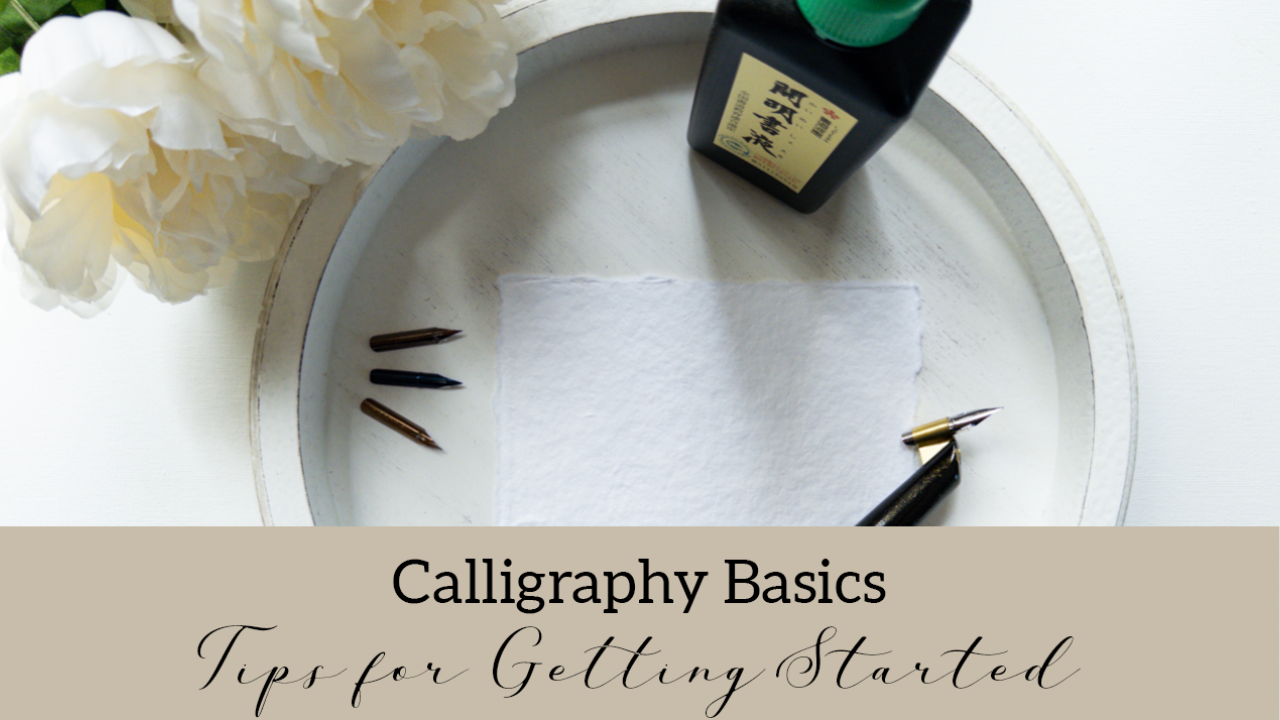Copperplate Basics: Tips for Getting Started

Have you ever seen something written in calligraphy and became instantly smitten with the beauty and elegance of it all? Perhaps you were at a wedding or baby shower and beautiful place cards or signage caught your eye, to the point where you said to yourself "I wish I could do that".
Here's where we come in. Enter the world of Kalli Camp Academy, a community to learn, flourish, and grow in the art of calligraphy. We aim to make it possible for artists at every skill level and culture to grow in their craft and connect with others on a deeper level through true friendships centered around shared passions. We also aim to support each other and help grow our small businesses as a result of this collaborative endeavor.

If you're just starting out or planning to start, here are helpful tips we recommend for beginners.
Choose the right pen holder
Jane Matsumoto, who teaches our Introduction to Copperplate Calligraphy course, recommends a pen holder that can easily be changed from an oblique to a straight pen holder. An oblique pen holder has a flange that holds the nib. When the flange is removed, the nib can be inserted directly into the pen holder itself. What's the difference, you ask? It's a matter of preference and comfortability. Another consideration is that an oblique pen holder allows the nib to be angled closer to the paper which makes it easier to write at a 55 degree angle. This is why the oblique pen is highly recommended for new calligraphers.
Be sure to use Copperplate calligraphy guidelines
When learning Copperplate, it is essential to have guidelines. The guidelines help provide the necessary foundation to help you learn proper letterforms which in turn create beautiful letters. First, Copperplate is written at a 55 degree slant, which is hard to master without guidelines. Each letter has a particular width and height to maintain consistent letterforms. Guidelines will be your best friend for years to come, not just in the beginning, so using them from the start helps build good practice habits.
Recommended nibs for beginners
In order to have better control with ink while writing, the Nikko G nib is highly recommended. Since it is a stiffer nib, pressing on the nib for thicker downstrokes will only allow the tines of the nib to open so far. Although this nib is highly recommended for beginners, there are a few others that could be used if preferred: Gillott 303, Hunt 22, Hunt 101 or the Leonardt Principal EF. The elegant beauty of Copperplate is the contrasting thick and thin lines that form each letter. With time and practice, you will be able to create graceful and beautiful letters of your own.
Recommended paper when just starting
Did you know that paper type makes a huge difference in the quality of your work? Start by practicing with the right paper and you'll be well on your way to mastering Copperplate calligraphy with (hopefully) a little less frustration. Here's what we recommend: the Copperplate practice pad from John Neal Books (one is white with no gridlines, the other has Copperplate gridlines - both are appropriate choices), or capitol bond paper. If you watched our live Q&A with Tico Kanzaki, she talked about her disappointment with not being able to master paper, ink and nib properly in the beginning. Our hope is to help prevent this similar and very common frustration from hindering your journey.
Choose beginner-friendly inks
Not every ink is meant for a calligraphy nib, and some inks are more friendly to use when just starting out. We highly recommend starting off with black Sumi ink. This ink - ready to use straight out of the bottle - has a good ink flow for virtually any nib. It can be easily diluted if necessary and dries to a beautiful finish.
Don't forget to go slow
Forget all those sped up videos you've seen on Instagram, TikTok, and YouTube. "Slow and steady wins the race" is the motto for mastering Copperplate. Think of drawing each stroke like an artist rather than writing in regular handwriting pace to help keep you from speeding up or rushing yourself.
Special tips
Listening to calming music, having a dedicated space (if possible), and sitting properly can also affect the way your practice sessions go. Are you thinking about learning Copperplate or brushing up your skills? Our Copperplate course opens soon! Click here to get on the waitlist to be first to know when registration opens.
Until next time, stay creative!
Written by Angenise Rawls, Independent Marketing Assistant and Special Projects Coordinator
Calligraphy Artisan at The Graceful Pen Studio | Instagram: @thegracefulpenstudio | www.thegracefulpenstudio.com




